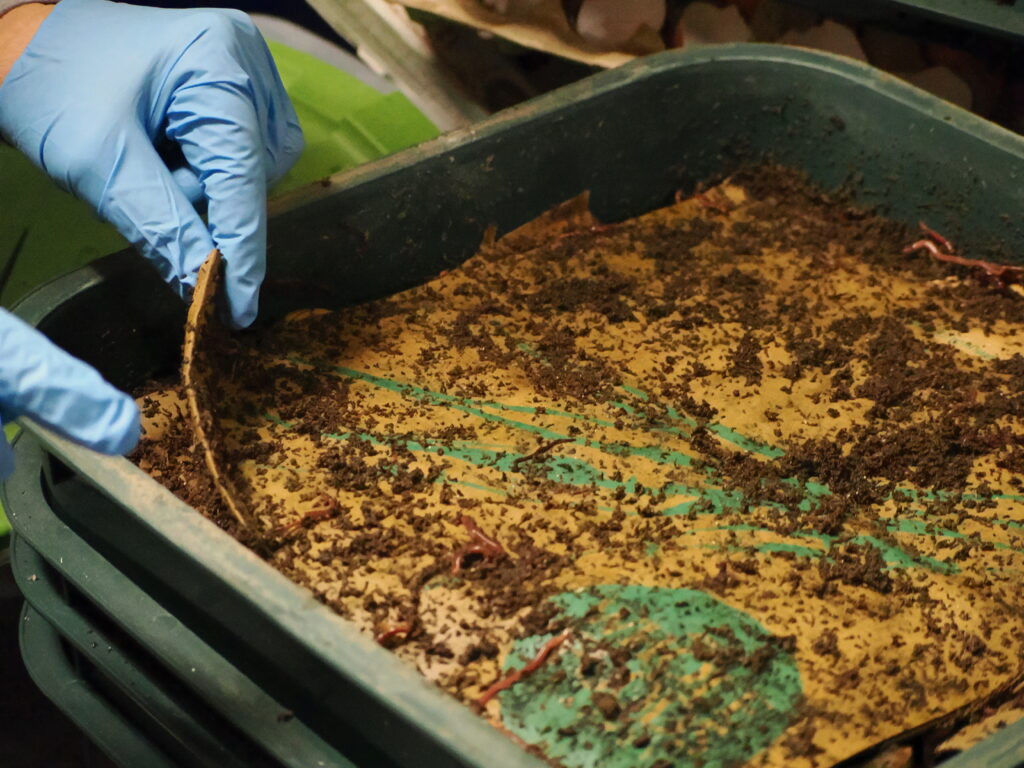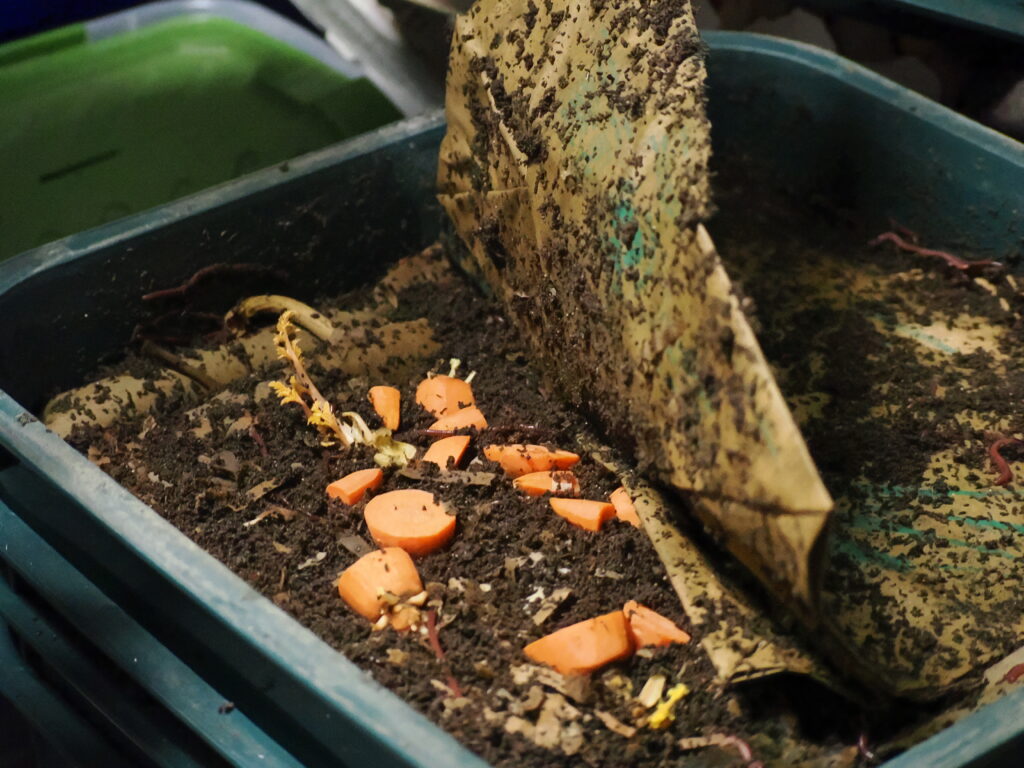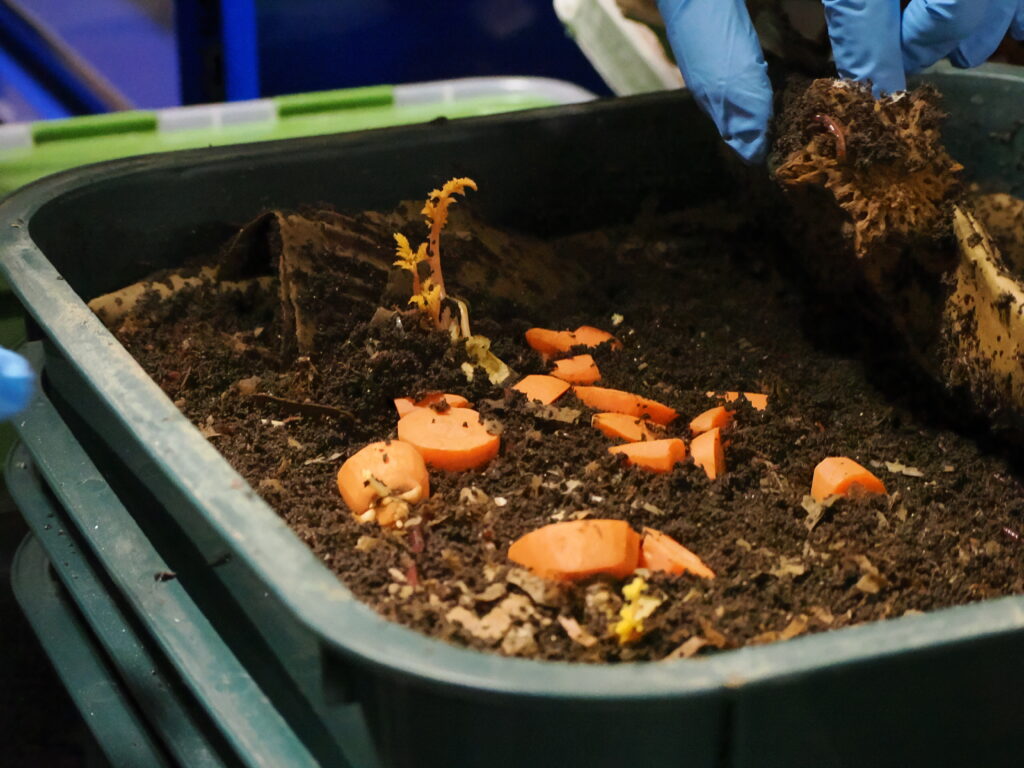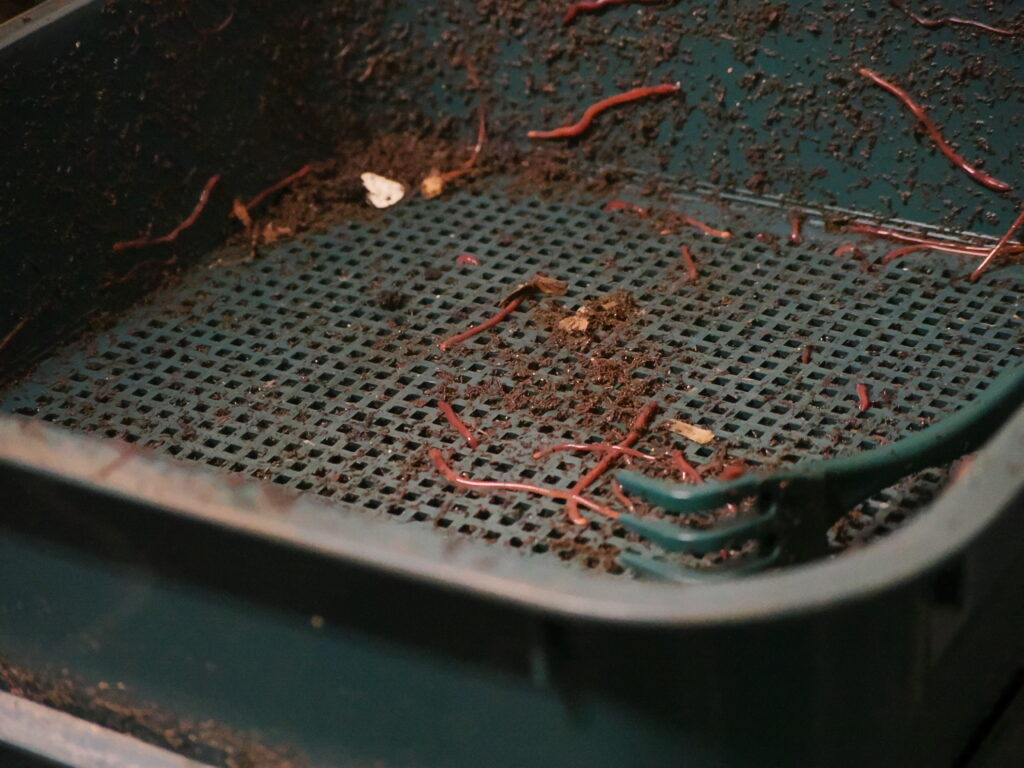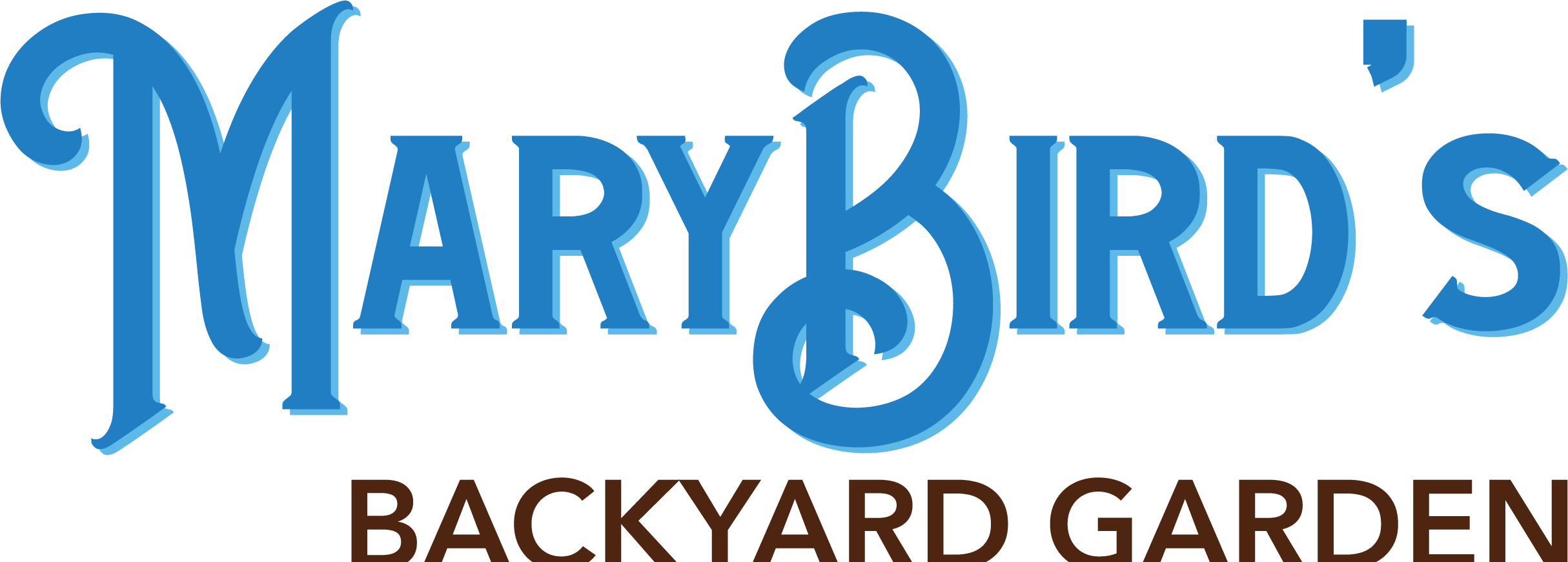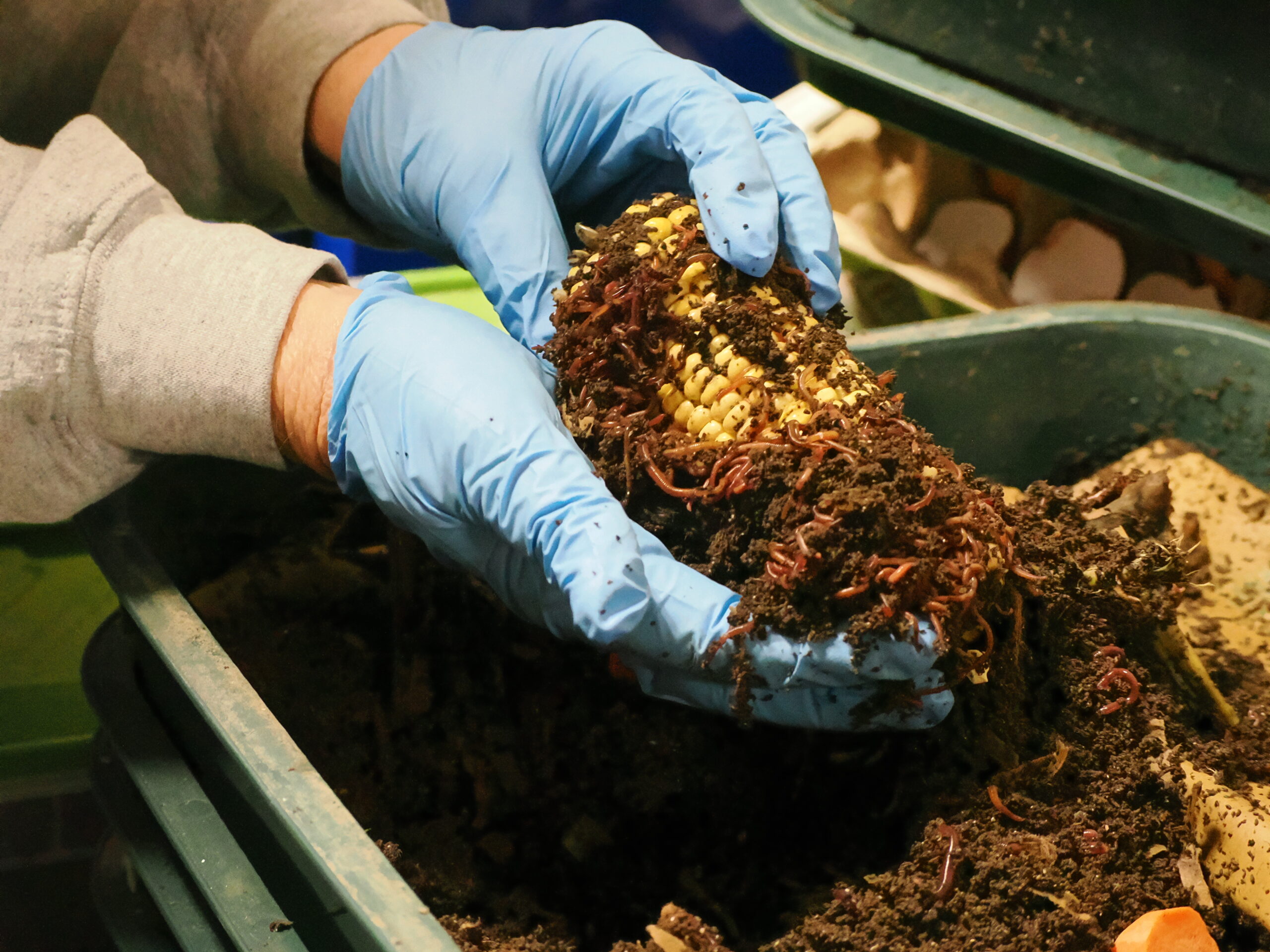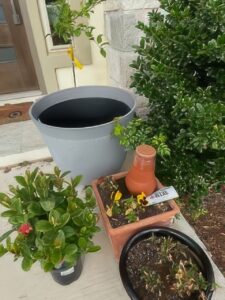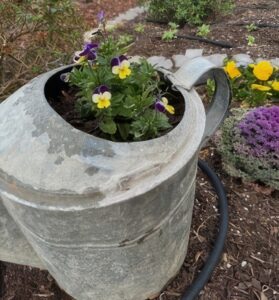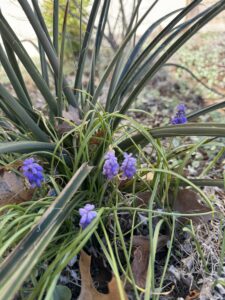I’ve been using a stacking tray system called a Vermihut for close to two years now and it has been an exciting adventure in vermicomposting. That is to say the worms and I are working together to enrich the garden through composting veggie kitchen waste. I find this partnership fascinating every time I peek under the lid of the topmost layer and watch the worms happily devouring their latest meal.
These incredible composting worms are a different species from the earthworms that dive deep into and move through the soil. My Red Wigglers (Eisenia fetida) like to live in the upper 3-6 inches of decomposing vegetative matter in the soil which makes them ideal for processing my food scraps. Along with the food sources given to the worms, we make them comfortable with bedding consisting of fluffy shredded cardboard, paper bags, paper rolls, napkins, and sometimes Canadian sphagnum moss. We include used coffee grounds, ground oatmeal, and ground eggshells as extra additives for their diet. The eggshells act as grit for their gizzards to grind food as they process the contents of their bin. Everything is passed through the worms, bedding, and food alike. I am beginning to understand the worms process their bedding and food sources through their bodies, grinding it all with grit in the gizzard, however, they obtain their nutrition by digesting the microorganisms that are themselves devouring the carrots or lettuce leaves buried in the bin.
I’ve developed a real fondness for my little family of worms. It’s very strange, I feel it’s important to care for them, check up on them, and assure myself they are snuggled in as cozily as possible. These little fellas are a very hard-working bunch and I enjoy peeking to see how they are progressing in their food scraps. You could not have convinced me that I would have this hobby when I was a younger person. Also, can you visualize my husband’s face when I told him: Honey, I would like to start keeping worms in the garage? That was a perfectly comical moment!
Originally I was drawn to using all of the waste vegetable matter after cooking and doing a small act to help reduce useful organic scraps from going to the landfill. You know, that is still a strong motivation for keeping a worm bin. Another reason I stay motivated is the benefits I’ve noticed in my garden. Things like a more robust plant even during water-stressed conditions. I believe the root structures of transplants have reduced shock time after being moved. It also seems as though seeds germinate easily when directly seeding into my garden beds containing the castings. I make use of the castings (poop) as a dilute tea. This is good for spraying on the plants and drenching the soil. It adds microorganisms that enrich each application. I mix the castings in container mixes, raised beds, and in-ground plantings.
It is hard to be precise about what you will have in your worm castings as compared to the benefits I may have because we probably feed different items and provide different bedding. Though differences are likely the castings still enrich each of our gardens. One other benefit they give to gardeners is a greater water-holding capacity in your growing mix.
If you would like to learn more about vermiculture here are a few sources to get you started:
Worms Eat My Garbage. Authors: Mary Appelhof and Joanne Olszewski
Uncle Jim’s Worm Farm. Uncle Jim’s Blog online
Composting With Worms! Presented by Tommie Clayton, Texas Master Gardener Compost Specialist Caldwell County, Online: Texas A&M Agrilife Extension
For now, I wish you Happy Gardening and Happy Worm Bins!
MerryBird
